Common Name: Okara; Amber seed; Ambrette; Ambretee grains; Bend
Idententifing Character:
Distribution:
Medical Uses:
Details
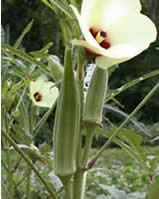
Common Name: Musk; Musk mallow; Musk seed; Musk seed plant; Ro
Idententifing Character:
Distribution:
Medical Uses:
Details

Common Name: Canada pitch tree; Hemlock bark; Hemlock leaves; H
Idententifing Character:
Distribution:
Medical Uses:
Details
Common Name: silver fir, sapin, argente' spin commun
Idententifing Character:
Distribution:
Medical Uses:
Details

Common Name: Carpenter's weed; Milfoil; Millefolium; Noble yarr
Idententifing Character: Aromatic perennial
Distribution: Widespread in temperate zones; native to Europe, on all but the poorest soils.
Medical Uses: Yarrow when administered hot and copiously will raise the heat of the body, equalize circulation, and produce perspiration. It opens the pores freely with its relaxing action upon the skin, and it purifies the blood of morbid waste material. Regulates the functions of the liver, especially beneficial in its influence on secretions throughout the entire alimentary canal; It tones the mucous membrane of the stomach and bowels. It is also healing to the glandular system. Yarrow will never weaken a patient because of its tonic action. Ague; Amenorrhea; Anaemia; Appetizer; Bile stimulate flow; Bladder, mucus discharges, inflammation; Bleeding haemorrhoids, lungs, bowels, rectal; infusion of powder; Blood cleaner coughing and spitting of; Blood tonic and prophylactically building; Boils, fomentation, infusion, tincture, fluid-extract; Breath shortness of; Bright's disease; Bronchitis. ; Chicken pox; Colic; Colds. (Infusion); Coronary thrombosis; Cough; Diabetes; Diarrhea, (including infants); Dysentery; Dyspepsia; Enteritis; Eye Achilles used juice as a wash for redness; Fevers, (hot); Fistulas, ointment, poultice or suppository; Flatulence; Gallbladder; Gastric stimulates secretions; Gastritis; Hair falling; Hands chapped, wash/dec; Headache; congestive headache; Hematuria, infusion, fluid extract, tincture, powder; Haemorrhoids, retention enema; Hypertension; Incontinence; Indigestion; Influenza; Intestines false membranes; Jaundice; Lack of appetite; Leucorrhea, internal and douche; Liver; measles, infusion; menstrual excessive flow; menstrual regulates periods; Nervousness; Nipples sore; Perspiration, obstructed, promote; Processes inflamed; Quinine substitute; Respiratory tract acute catarrh;
Rheumatism. ; 'Running
of the reins'' in men and discharge of women decoction in white
wine; Skin diseases, infusion; Smallpox; sores, dec/wash, poultice
or ointment. Stomach gas, sickness, tonic; Styptic externally;
Tabes of spinal marrow; TB of the lungs; Throat relaxed; Tonic
for run down conditions; Toothache (fresh leaves); Typhoid fever;
Ulcers; Urinary organs; Urine suppressed, scanty; Wounds;
Details
Common Name: Sweet flag
Idententifing Character:
Distribution:
Medical Uses:
Details
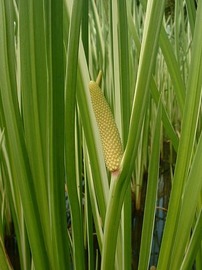
Common Name: Russian knapweed,
Idententifing Character:
Distribution:
Medical Uses:
Details
Common Name: Agrimony
Idententifing Character:
Distribution: Native to south-east Asia, especially Sumatra; in mixed forests close to rivers.
Medical Uses: Antiseptic Genito-urinary; Bronchitis. , chronic Expectorant; Skin poultices, plasters, and directly in tincture; Mouth wash diluted; Mucous membranes, stimulating; HOMEOPATHIC:
Details

Common Name: Tree-of-heaven,
Idententifing Character:
Distribution: Native to China naturalized to eastern North America
Medical Uses: Dyusentery; Diarrhoea; Asthma; Epilepsy; Palpitations; Dueche in Gonorrheea and leucorrhoea;
Details

Common Name: Chinese sumach,
Idententifing Character:
Distribution:
Medical Uses:
Details
Common Name: Marshmallow Root
Idententifing Character:
Distribution:
Medical Uses:
Details

Common Name: Wormwood
Idententifing Character:
Distribution: Is a hardy, sprowling perenical
Medical Uses: currently used for covid. Dispensing worms. Exteranly for sprains and bruses.
Details
Common Name: Chamomile
Idententifing Character:
Distribution:
Medical Uses:
Details
Common Name: Dogbane
Idententifing Character:
Distribution: A perennial with opposite leaves that secretes a milky sap when bruised or broken, reaching 5-6 feet
Medical Uses:
Details

Common Name: Bardana (2),4), Bardane (7), Burdock (2, 3, , 3, 4), Burdock root ( 4, 5), Beggars's buttons ( 3, 4, 5, 7), Burrburr (5), Burrseed (2), Clothburr (2, 3, 5), Cocklebur (2), Cockle-Button (7), Cockold-dock (7), fox's clote ( 5), Grass burdock (2), hardock (2, 5, 7). harebur (2 4, 5), Hill ( 4), Hurrbur (2, 7), Lappa ( 3, 4, 5), Lappa minor ( 3, 4), Lappa Tousntosa ( 4), Niu-ts'ai (8), Niu-p'ang-tzu (8), Pien-ch'ien-niu (8), P'ang-ch'ien-niu (8), Pien-ch'ien-niu (8), Pien-futz\'u (8),Shu-nien (8), Stick-buttons (7), Ta-li-tzu (8), Thorny Burr ( 3, 4, 5), turkey burr (2, 5), Wu-shish (8), Ye-ch\'a-t\'cu (8),
Idententifing Character: BiennialAsteraceae;
Distribution: Naturalized in North America, from Asia and Europe, along roadsides and in all vacant lots.
Medical Uses:
Details
Common Name: Butterfly Milkweed
Idententifing Character:
Distribution: Mixed grassland; Moist Mixed Grasslands; Aspen Parkland; Along Roadsides
Medical Uses:
Details
Common Name: Mahonia aquifolia. Holly-leaved Barberry. Oregon G
Idententifing Character: It is a quickly-growing shrub about 6 feet high:
Distribution:
Medical Uses: syphilis and impure blood-conditions. It may be used like colombo, berberis, etc., in dyspepsia and chronic mucous complaints. In constipation it is combined with Cascara Sagrada. It improves digestion and absorption. Acne, Amoebas, Arthritis, Bloodshot Eyes, Boils, Candida, Cholera, Conjunctivitis, Debility, Diabetes, Dysentery, Eczema, Edema, Fever, Gallstones, Gastritis, Gastroenteritis, Giardia, Hangovers, Hepatitis, Herpes, Hypothyroid, Jaundice, Kidney Stones, Liver Stagnation, Malaria, Psoriasis, Salmonella, Scrofula, Shigella, Sore Throat, Spleen Enlargement, Staphylococcus, Syphilis
Internal Applications: Tea, Tincture, Capsules.
The antibacterial properties of the alkaloid berbamine have shown activity against Staphyloccus, Streptococcus, Salmonella, Shigella and Eschorichia Coli. It has antimicrobial properties that are especially beneficial for the skin and intestinal tract. It helps to dilate blood vessels and thus lower blood pressure. Mahonia is more effective for chronic liver problems.
opical Uses: Boils, Conjunctivitis, Itchy Skin, Pyorrhea, Sore Throat, WoundsTopical Applications: Eyewash for infections such as conjunctivitis and bloodshot eyes. Berries made into a gargle for sore throat. Use as a mouthwash or apply directly to gums for pyorrhea. Use as salve or wash for itchy skin, boils and wounds.
Culinary uses: Berries can be cooked, made into jams and syrup, and candied. Berries are edible raw, and the juice is often used as a substitute for lemon juice.
Energetics: Bitter, Cold.
Good for all infections and hot skin conditions, both acute and chronic, including acne, chronic dermatitis, rashes, herpes, itching and scaly conditions such a s eczema and psoriasis. Infectious hepatitis (esp. B), Jaundice, liver stagnation, periodontal disease, liver stagnation, Constipation and indigestion, all infectious diseases of the genitourinary tract especially with discharges. Chronic candid, stimulates thyroid. Used by the Native Americans as an anti-septic and detoxifier. It is used externally to disinfect open wounds, boils, acne, and eczema. Power to ground and promotes securityDetails

Common Name: Borage,starflower,cool tankard, bourrache
Idententifing Character:
Distribution:
Medical Uses:
Details
Common Name: Calendula; Chin-chang-hua; Garden Marigold; Marigolds; not related to african or Mexican marigolds; Pot marigold;
Idententifing Character: Annual; Biennial Rarely; COMPOSITAE;
Distribution: Mediterranean native; distributed throughout the world as a garden plant.
Medical Uses:
- Leaves & FLOWERS: Acne. ; bruises; burns; cuts; disorders; Eczema. ; sedative hypotensive (in animal tests); skin; ulcers; warts;
- Flowers; infusion, Anaemia; Arteries; Bile promote flow; Bronchitis. ; Colds. ; Colds. ; Colitis; Conjunctivitis; Duodenal ulcers; Fevers; Inflammatory Skin Lesions; Leg ulcers; Leucorrhea (dried flower or fresh juice); Lymphatic nodes, Inflammation of; menstrual cramps; Open Lesions with bleeding 1-10 dilutions; Vaginal and cervix irritation (douche or tampons dressing); Veins;
Details
Common Name: Hemp. ; , Pot, Marihuana. , Indian Hemp, Leaves and smaller stocks dried and broken coarsely, and intermixed with a few capsules, is known as bhang (Hindustan), siddhi (Bengal), sabi(Bombay, andhashish(Arabia). Flowering and fruting tops, from which the resian has not been removed ganja, ganjah, gunjah in India and guaza in London and other drug markets.
Idententifing Character: Annual Urticaceae. Cannabis sativa is a herbaceous annual growing from;
Distribution: indigenous to Persia and northern India. Naturalized in North America, Brazil, and Europe. Native to
Medical Uses: Glaucoma, Tumours, amnia relief(e.g. Aids, Cancer. therapy, seasickness), Epilepsy, M.S., Back Pain & muscle spasms, Antibiotic CBD Disinfectants, Arthritis, herpes, Cystic Fibrosis, Rheumatism. , Sleep Relaxation, Lowers Blood pressure, Dilates the arteries and reduces body temp. MS; Medicinal use and attitude to the drug varies according to country. Considred of benefite in glaucoma, spasmodic cough, neuralgia, athma and migr Extractum Cannabis indicae - extract of Indian Hemp. U.S. The alcoholic extract of Indian hem is a blackish, resinous extract, of a decided narcotic odor and a peculiar taste. In the East, hemp and its educts are used as narcotic stimulants. Gunja is the dried plant as sold in the bazzars of Calcutta for smoking. Churrus is the resinouse exudation with teh epidermis, etx., scraped of the leaves. Hashish is an Arabian preparation of the drug. The effects of teh hemp upon the system would suggest that its active principle is an alkaloid; but all attemps so far have failed toseparate anything from the resin, which represents the activity of the plant, and is known as Cannabin. It is best obtained by precipitating the saturated tincuture wiht water containing an alkali. Besides cannabin, hemp contains also a trace of volatile. oil. Physiological Action. When given in full doses, cannabis indica produces a feeling of exhilaration, with a condition of reverie, and a train of usntal and nervous phenousna which varies vary according to the temperausnt or idiosyncrasies of the subject, and vary probably also, to some extent, according to the nature of his surroundings. The sensations are generally spoken of as very pleasurable; often beautiful visions float before the eyes, and a sense of ecstasy fills the whole being; sometimes the venereal appetites are greatly excited; sometimes loud laughter, costant giggling, and othr indications of mirth are present. some years since, in experiusnting with the American extract, I took a very large dose, and in the essay upon the subject (Proceeding of the American Philosophical Society, 1869, vol, xi pg. 226) the result was discribed as follows: ''About half-past four P.M., September 23, I took most of the extract. No imusdiate sysmptoms were produced. About seven P.M. a professional call was requested, and, forgetting all about the hemp, I went out and saw my patient. Whilst writing the perscription, I becaus perfectly oblivious to surrounding objects, but went on writing, without any check to or deviation from the ordinary series of usntal acts connected with the process, at least that I am aware of. When the recipe was finished, I suddenly recollected where I was, and, looking up, saw my patient sitting quietly before us. The conviction was irresistible that I had sat thus many minutes, perhaps hours, ans directly the idea fastened itself that the hemp had cousnced to act, and had thrown us into a trance-like state of considerable duration, during which T had been stupidly sitting before my wondering patient. I hastily arose adn apologized for remainng so long, but was assured I had only been a very few minuets. About seven and a half P.M. I returened Home. I was by thistimes quite excited, and the feelingof hilarity now rapidly increased. It was not a sensn=uous feeling, in the ordinary meaning of the term; it was not usrely an intellectual excitation; it was a sort of bien-être, - the very opposite to malaise. It did not cous from without; it was not connected with any passion or sense. It was simply a feeling of inner joyousness; the heart seeusd buoyant beyond all trouble; the whole system felt as though all sense of fatigue were forever banishe; the mind gladly ran riot, free costantly toleap from one idea to another apparently unbound from it ordianry laws. I was disposed to laugh; to make comic gesture; one very frequently recurrent fansy was to imitate with the arems tha motions of a fiddler, and with the lips the tune he was supposed to be playing. There was nothing like wild delirium, nor any hallucinations that I reusmber. At no times had I any visions, or at least andy that I can now call tomind; but a person who was with us at times states that once I raised my head and exclaiusd, ' Oh, the mountains. the mountains.' Whilst I was preforming the various antics already alluded to, I knew very well I was acting exeedingly foolish, but could not control myself. I thinkit was bout eight o'clock when I began to have a feeling of numbness in my limbs, also a sense of general uneasiness and unreast, and a fear lest I had taken an overdose. I now costantly walked about the Homee; my sin to maysel was warem, infact my whole surface felt flushed; my mouth and throught wer vary dry; my legs put on a strange, foreign feeling, as though they were not a part of my body. I counted my pulse and found it one hundred and twenty, quite ful and strong. A foreboding , an undefined, horrible fear, as of impending death, now comusnced to creep over us; in haste I sent for Medical aid. The curious sensations in my limbs increased. My legs felt as though they were waxen pllars beneath us. I reusmber feeling them with my hand and finding them, as I thought at least, very firm, the muscles all in a state of tonic contraction. About eight o'clock I began to have morked 'spells,' - periods when all connection seeusd to be severed between the external world and myself. I might be said to have been uncounsious during these times, in so far that I ws oblivious to all external ofbects, buton coming ut of one, it was not a blank, dreamless void upon which I looked back, a usre empty space, but rather a period of active but aimless life. I do not think there was any connected thought in them; they seeusd simply wild reveries, without any bindingcord, - each a usre chaos of disjointed ideas. The mind seeusd freed form all its ordianry laws of asociation, so that it passed from idea to idea, as it wre, perfectly at random. The duration of thes spells to us was very great, although they really lasted but from a few seconds to a minute or two. Indeed, I now enirely lost my power of usasuring times. Seconds seeusd hours; minutes seeusd days; hurs seeusd infinte. Still I was perfectly counsious during teh intermissions between the paroxysms. I would look at my watch, and then after an hur or two, as I though, would look again and find that scarcely five minutes had elapsed. I would gaze at its face in deep disgust, the minute-hand seeminlgy motionless, as thugh graven in the face itself; the laggard second-hand moving slowly, so slowly. It appeared a hopeless task to watch during its wholeinfinite round of a minute, and alwasy would I give up in dispair before the sixty seconds had elapsed. Occasionally, when my mind was most lucid, there wa in it a sort of duplex action in reagrd to the duration of times. I would think to myself, I has bee so long cince a sertain event, ans hour, for example, snce the doctor caus; and the reason would say No, it has been only a few minutes; ur thugs or feeling are caused by the hemp. Nervertheless, I was nto able to shake off this sense of the almost indefinite prolongation of times, enven for a minute. The paroxysms already alluded to were not accompanied with muscular relaxation. About a quarter before nine o'clock, I was standing at the door, anxiously watching for the doctor, and when the spells would cous on I would remain standing, leaning slightly, perhaps, against teh doorway. After awhile I saw a man approachin, whom I took to be the doctor. The sounds of his steps told us he was walking vary rapidly, and he was under a gas-lamp, not mor the one-forth of a quare distant, yet he appeared a vast distance away, and a corresponding times approaching. This was the only occasion in which I noticed an exaggeration of distance; in the room it was not preceptible. My extremitites now began to grow cold, and I went into the Homee. I do not reusmber further, until I was aroused by the doctor shaking us or calling us. Then intellection seeusd pretty good. I narrated what I had done and suffered, and told the doctore my opiion as that an eustic was indicated, both to remove any of the extract still remaining in my stomach, and also to arouse teh nervous system. I further suggested our going into the office, as more suitable thant the parlor, where we then were. There was at this times a very marked sense of numbness inmy limbs, and what the doctor said was a hard pinch produced no pain. When I attempted to walk up-stairs, my legs seeusd as though their lower halves were made of lead. After this there were no new sysmptoms, only an intensifying of those already usntiond. **
Details
Common Name: Cayenne;
Idententifing Character:
Distribution:
Medical Uses:
Details
Common Name: American chestnut
Idententifing Character:
Distribution:
Medical Uses:
Details
Common Name: Eastern Redbud
Idententifing Character:
Distribution: Native to: Southern ON
Medical Uses:
Details
Common Name: Chicory, Succory, Blue Daisy, Blue sailors, Wild succory, chicoree, chicotin, barbe du capuchin, chevaux de paysan
Idententifing Character:
Distribution:
Medical Uses: Leaves, poultice, boil, abscesses Not recommended as a continual herb. Dandelion better as it is not a sedative and high food value.
Details

Common Name: Cucumber;
Idententifing Character:
Distribution:
Medical Uses: Sunburn; Pealed soothing to intestines; eliminates uric acid accumulated in gout & Rheumatism. ; Poultice reduces inflammation;
Details
Common Name: Fire Weed, willow herb
Idententifing Character: perennial
Distribution: - throughout BC - burned or logged areas or along roadsides - found in coniferous, d
Medical Uses:
Details
Common Name: Licorice
Idententifing Character:
Distribution:
Medical Uses:
Details
Common Name: Hops;
Idententifing Character:
Distribution:
Medical Uses:
Details
Common Name: Hydrangea root.
Idententifing Character:
Distribution:
Medical Uses:
Details
Common Name: St. John's
Idententifing Character:
Distribution:
Medical Uses:
Details
Common Name: Chinese star anise, takko
Idententifing Character:
Distribution: Illicium verum is a medium-sized evergreen tree native to northeast Vietnam and southwest China.
Medical Uses:
Details
Common Name: Walnut Leaves
Idententifing Character:
Distribution:
Medical Uses:
Details
Common Name: Saxifrax; Saloop; Ague Tree; Cinnamon Wood;
Idententifing Character:
Distribution: The generic name of three species of trees., two native to eastern Asia, one to eastern North Americ
Medical Uses: Corrective in Rheumatism. , varicose ulcers Painful menstruation; Afterbirth pains; skin eruptive diseases; essential oil for painful toothache; Used to improve flavour of other compounds; Poultice ulcers, oil in liniments and application for bruises and swellings.
Details
Common Name: Maitake mushroom, Hen of the woods, Ram's head
Idententifing Character:
Distribution: Gills: Unlike typical gilled mushrooms, maitake mushrooms don't have distinct gills. Instead,
Medical Uses: May aid in diabetes management and support in cancer treatments (ongoing research) Potential applications in diabetes and cancer treatment (consult a healthcare professional).
Details
Common Name: Malvas.
Idententifing Character:
Distribution:
Medical Uses:
Details
Common Name: Alfalfa
Idententifing Character:
Distribution:
Medical Uses:
Details

Common Name: Pennyroyal.
Idententifing Character:
Distribution:
Medical Uses:
Details
Common Name: Bergamot
Idententifing Character:
Distribution:
Medical Uses:
Details
Common Name: Evening primrose, sundrops, Sun drop, Tree Primrose, Oenothere
Idententifing Character: Perenial
Distribution: North America,
Medical Uses: To quiet nervous sensibility, acts on the alimentary toxins stimulates st
Details
Common Name: Cukilanarpak (native Alaskan for ''large plant with needles''), Devil's club Panax horridum Sm., Echinopanax horridum (Sm.) Decne. & Planch., Fatsia horrida (Sm.)
Idententifing Character:
Distribution: This hardy plant grows in moist ravines and well-drained soils along much of the Alaskan coast and a
Medical Uses: This plant has a long tradition of use by the native tribes of Alaska and British Columbia for centuries and other populations in the Northwestern regions of the United States and Canada. The plant has been used internally by drinking an aqueous extract of the root or stem bark for treatment of respiratory ailments (eg, cold, cough, sore throat, chest pain, tuberculosis) and GI complaints (eg, stomach pain, ulcers, gallstones, indigestion, constipation).Bloxton 2002, Russell 1991, Smith 1983 Externally the prickly outer bark sometimes is scraped from the stem, leaving the cambium for use in the preparation of decoctions and poultices; however, others use both the cambium and stem together. Poultices were applied to sores and wounds to prevent or reduce swelling and infection. The cambium sometimes is softened by chewing prior to being placed on a cut or burn as an emergency analgesic and local antiseptic. In many cultures, the plant is believed to possess ''magical'' powers that impart great strength.Bloxton 2002, Russell 1991, Smith 1983 Ethnobotanic data indicate that the extracts of the inner bark appear to have antipyretic, antitussive, antibacterial, and hypoglycemic properties. The plant has been used internally to treat a variety of conditions including influenza, measles, diabetes, cancer, arthritis, and rheumatism. Devil's club has been used as a purgative, emetic, and cathartic in higher doses.Bloxton 2002, McCutcheon 1995, Smith 1983 Anti-infective activity A recent screening of a methanol extract of the inner bark of O. horridus showed partial inhibition against the respiratory syncytial virus. Previous screenings of O. horridus extracts exhibited antimicrobial and antifungal activities. The polyynes of the plant exhibited anti-Candida activity; and, in a disk diffusion assay, antimycobacterial activity, by killing Mycobacterium tuberculosis and isoniazid-resistant Mycobacterium avium at 10 mcg/disk.Calway 2012, Kobaisy 1997, McCutcheon 1997, Qiu 2013 Cancer Animal data A limited pool of researchers have reported on the effect of extracts of Oplopanax horridus and related species on a range of human cancer cell lines and tumors.Jin 2014, Li 2010, McGill 2014, Meng 2015, Sun 2010, Tai 2014, Wang 2013, Zhang 2014 Hypoglycemic activity Animal data Several animal investigations were conducted in the 1930s and 1940s in an attempt to characterize the pharmacologic activity associated with the traditional uses of devil's club. Following reports that patients with diabetes could be managed successfully using water extracts of the root bark, animal-based investigations suggested that the extract had hypoglycemic activity in the hare and that the plant was not associated with toxicity. Further investigations were unable to verify the hypoglycemic effect in rabbits.Large1938, Piccoli 1940, Stuhr 1944 Clinical data No pharmacologically active component could be identified in the plant. A report of a case study of two patients given extracts of the plant in conjunction with a glucose tolerance test found no hypoglycemic effects that could be attributed to devil's club.Calway 2012, Smith 1983, Stuhr 1944
Details
Common Name: Poppy
Idententifing Character:
Distribution:
Medical Uses:
Details
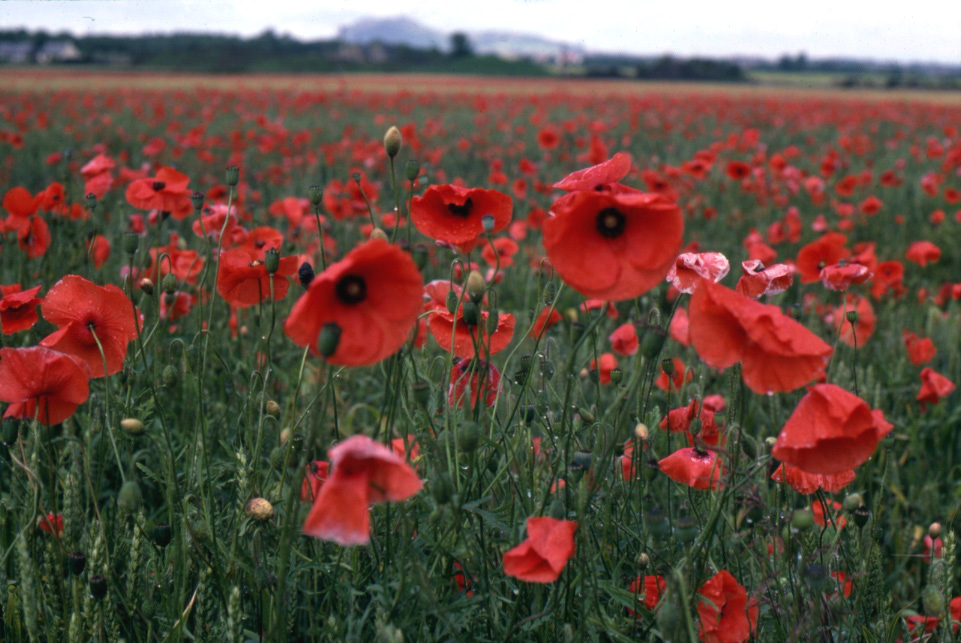
Common Name: Almond
Idententifing Character:
Distribution:
Medical Uses:
Details
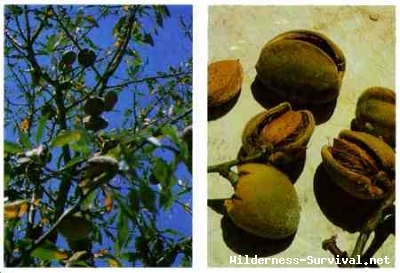
Common Name: Rose
Idententifing Character:
Distribution:
Medical Uses:
Details

Common Name: Willow, goat willow
Idententifing Character:
Distribution:
Medical Uses:
Details

Common Name: Elder
Idententifing Character:
Distribution: native to Europe, North Africa, western Asia, Introduced elsewhere. In hedgerows, woodland edges, on
Medical Uses: Lungs; Lymphatic; Fresh shoots cooked like chicory powerful purgative; Purge phlegm and watery humours. Root: emetic in large doses; small for lymphatic, dropsy, kidney, mild laxative; Inner bark: similar to Valerian, steeped in wine for Epilepsy, nervous disorders; LEAVES: Contain flavones, prevents cataracts formation,; fresh juice for eye disorders; ointment Eczema. ; Itch treatment: Herbal: Burdock. , Elder. ; ; ringworm; scrofula; Leaf buds: Purgative 'violent no longer used; FLOWERS: Anemia; Appendicitis, Asthma %=jump|F35| Formula #35 Chest and Lung Problems (relieve congestion and inflammation) .=% , treatment: Herbal: Cannabis setiva ; ; Mullein , Elder. ; Berries: Bronchial pneumonia; Burns; Chronic Cold; Contains Flavone; Coughs; External infusion: Eye disorders; Fever reducing; Head-aches; Influenza; Laryngitis; measles; menstruation painful; Migraine; Neuralgia; Pharyngitis; Prevents cataracts by deactivating peroxides; Pulmonary complaints; Scarlet fever; Skin; HOMEOPATHIC:Infusion; powder; eye wash; tincture; salve; Wine of elder is useful in dropsical diseases, especially ascites, and dropsy supervening upon scarlatina or other exantheniatous diseases.
Details
Common Name: Holy Thistle, Marian Thistle, Marystistle, Milk-thistle, St, Mary's Thistle, Wild Artichoke;
Idententifing Character: L Gaertn, COMPOSITAE; Annual or Biannual
Distribution: Native to central and west Europe, Introduced and naturalized in California and elsewhere. Naturalis
Medical Uses: Whole Plant, Appetite stimulant; Digestive, Dyspepsia, Liver said to regenerate tissue, Gall bladder; Stimulate flow of Bile,
Powdered Seed: Taken in emulsion are markedly
Choleretic and used in cardiovascular disorders, Jaundice
, Gallstones colic; Leg
Ulcers , Variscose
Veins .
Details
Common Name: Holy Thistle, Marian Thistle, Marystistle, Milk-thistle, St, Mary's Thistle, Wild Artichoke;
Idententifing Character: L Gaertn, COMPOSITAE; Annual or Biannual
Distribution: Native to central and west Europe, Introduced and naturalized in California and elsewhere. Naturalis
Medical Uses: Whole Plant, Appetite stimulant; Digestive, Dyspepsia, Liver said to regenerate tissue, Gall bladder; Stimulate flow of Bile, Powdered Seed: Taken in emulsion are markedly Choleretic and used in cardiovascular disorders, Jaundice , Gallstones colic; Leg Ulcers , Variscose Veins .
Details
Common Name: Benzion; Bum Benjamin; Gum Benzoin;
Idententifing Character:
Distribution: Native to south-east Asia, especially Sumatra; in mixed forests close to rivers.
Medical Uses: Antiseptic Genito-urinary; Bronchitis Chronic, Expectorant Mildly; Skin poltices, plasters, directly in tincture; Mouth wash diluted; Mucous membranes, stimulating;
Details
Common Name: Dandilion
Idententifing Character:
Distribution: North america
Medical Uses: Greens purify and alkalize bloodstream, root ceans elimation organs, balance blood surgar levels, diabeties, dyspeptics anemia, Latex for worts arthritis pains Coffee replaciment (roasted root) infusion of fresh root stimulates flow of bial, gal and urine. during flowering stage leaves - skin desease, anemia, tooth enamel formateions, chronic arthritis, gout , stiff joints. Jhon lust 8 week Dandelion cure. 1 table spoon fresh root& leave brought to paoi and steeped in 1/2 cup water 1st main tea 2 days with 3 tablesppon of juice of root and leaves drucken in water at intervals, freash leave eaden with salad Warts - Milk (from Stem) epotides applied to wart
Details
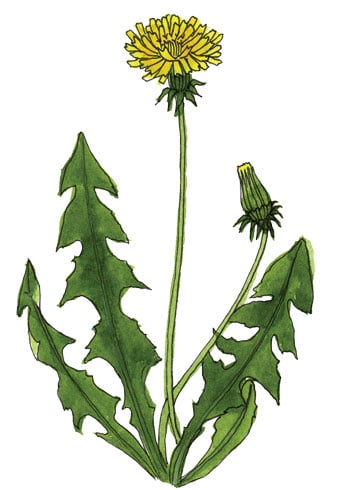
Common Name: Alsike Clover
Idententifing Character:
Distribution:
Medical Uses:
Details
Common Name: stinging nettle, common stinging nettle, great stinging nettle, common nettle, nettle,
Idententifing Character:
Distribution: Nine of thirty species of Urtica, a herbaceous plant or shrub of the Urticaceae family, are found i
Medical Uses: The Indians used Nettle as a counter-irritant when in pain, by striking affected parts with the branches. A root decoction was made to bathe rheumatic pains and joint stiffness. Pounded leaves rubbed on limbs, and hot poultices of the bruised leaves were also used to dress rheumatic discomfort. Nettle is an excellent styptic, checking the flow of blood from the surface almost immediately upon application of the powdered root or leaves softened and bruised. (If the fresh leaves are left on too long they will encourage water blisters.) For spitting of blood and all haemorrhages of the lungs, stomach and urinary organ, this is one of the most powerful agents in the vegetable materia medica. Dr. George P. Wood, M.D., and Dr. E. H. Ruddock, M.D., ''Vitalogy'' (1925) relay the following: ''For haemorrhages the express juice of the fresh leaves is regarded as more effective than the decoction, given in teaspoonful doses every hour or as often as the nature of the case requires.'' In decoction, Nettle is valuable in diarrhoea, dysentery, piles, neuralgia, gravel, inflammation of the kidney. Tea made from the young or dried root is of great help in dropsy of the first stages. A herbal Nettle tea will expel phlegm from the lungs and stomach and will clean the urinary canal. The seeds are used in coughs and shortness of breath.J. Kloss, in ''Back to Eden'', says: ''Use nettle simmered for 30 minutes and massage into the scalp after rinsing the hair to bring back the natural colour.'' For those suffering from rheumatism, without any relief, rub or stick the troubled part with fresh nettles for a few minutes daily. The relief of joint pain will often surrender to a few moments of unpleasant stinging. Krapiva (Nettle) grows everywhere in Russia. After 300 years modern science has established and gives credit to one of the secrets of Nettle as an antiseptic.
Details
Common Name: Common Periwinkle, Earlyflowering, Evergreen, Herbe à la Capucine, Herbe de Fidélité, Lesser Periwinkle, Myrtle, Petite Pervenche, Pervenche Mineure, Small Periwinkle, Vinca minor, Vincae Minoris Herba, Vincapervinca, Violette des Morts, Violette de Serpent, Violette de Sorcier, Wintergreen
Idententifing Character:
Distribution:
Medical Uses:
Details